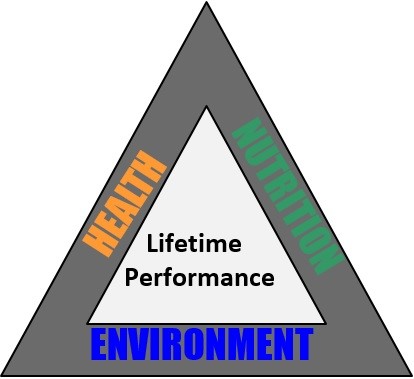24-month calving
Heifer rearing is an important enterprise on dairy farms as it accounts for approximately 20% of milk production costs and management during the rearing period can have major impacts on the lifetime performance of the dairy cow and on the carbon footprint of dairy farming.
Successful, cost effective heifer rearing, to achieve high levels of lifetime performance requires a combination of a good rearing environment, leading to good calf health, and good nutrition.

Analysis of the Northern Ireland Animal and Public Health Identification System (APHIS) database of heifers calving in 2016 indicates that the average age at first calving for dairy heifers is 27.5 months with 7% of heifers calving by 24 months of age. The age at first calving has fallen considerably from 32.7 months as reported by and AFBI/CAFRE survey and analysis of APHIS data in 2008.
Analysis of milk recording data indicates that there is a strong correlation between heifer age at first calving and lifetime yield and longevity. Heifers calving at 24 months of age produce approximately 7000 litres more milk in their lifetime than heifers calving at 36 months of age as the earlier calving heifers spend approximately 7 months longer in the milking herd than heifers calving at the greater age.
Rearing replacement heifers to calve at 24 months or less, at approximately 90% of mature body weight, is recognised internationally as a key target to minimise rearing costs and greenhouse gas emissions from dairy farming. The Agricultural and Horticultural Development Board (AHDB) recommend target weights for weaning (2 months) 75kg, service (14 months) 390kg and a post calving weight of 570kg. To achieve these weight targets requires an average growth rate of 0.75 kg per day.
It is widely accepted that the feeding sufficient colostrum is a key determinant of a calf’s health and survival leading to increased daily live weight gain and feed efficiency, reduced age at first calving and increased milk production (Godden, 2008). Research from AFBI Hillsborough has found that calves fed colostrum at a rate of 5% of body weight compared to 10% of body weight, had increased cases and treatments for enteric infections such as scour.

